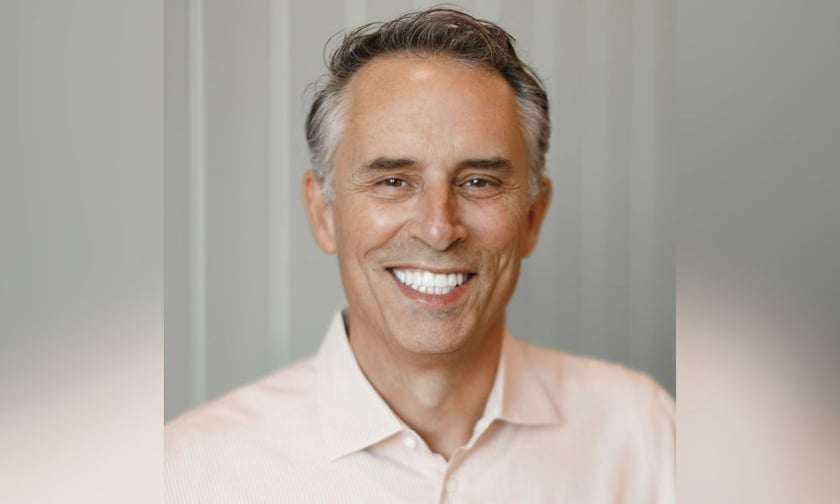

AI in insurance is expected to save the industry $390 billion by 2030, according to research from WorldMetrics, with 84% of insurance executives adding that they believe that AI will revolutionize the industry in the next three years. And while tech is most definitely redefining how we work in insurance, some employees are nervous about what the robotic revolution will mean for their jobs.
Lance Miller, CEO at Surex, believes that tech is coming to the insurance sector – but it’s irrelevant without that all-important human partnership.
“Everyone’s afraid they’re going to lose their jobs,” Miller tells IB. “In reality, AI has actually allowed people to focus more on the areas they need to focus on, and let the algorithms handle what doesn’t require the time.”
Surex’s strategic investment in AI, which Miller notes began about 10 years ago, has allowed the company to streamline its back-end processes. According to Miller, AI’s primary advantage over robotic process automation (RPA) is its ability to adapt and improve over time.
“RPA breaks when it doesn’t fit the mold,” he says. “Whereas AI tends to learn and get better over time.” This adaptability has been key in handling Surex’s growing data needs, making operations more efficient and freeing up staff to focus on more complex issues.
One of the most exciting areas of AI development for Surex is risk selection and marketing. As Miller shares, Surex uses AI to analyze and learn from “closing rates” and other data to determine what types of risks insurance carriers want to underwrite. For example, in Alberta’s volatile market, this is particularly important. AI helps Surex refine its approach to align with the needs of carriers, ensuring that the company targets the right customers.
“It’s really important to have our risk selection and our marketing targeting the type of business that carriers are price-adequate on,” Miller says.
On the marketing front, the integration of Surex’s algorithms with Google’s AI has allowed the company to create more precise targeting strategies. With over 100 different pieces of information coming from personal insurance data like home and auto, the challenge lies in sifting through that data and identifying quality leads. Miller emphasizes how Surex’s system communicates with Google’s algorithms to ensure they are getting the “right business” rather than engaging in mass marketing.
This process can be done by combining data analysis, machine learning, and targeted marketing. Here's how it would typically work:
1. Data Collection: First, the company collects a large amount of data on past insurance applications, including which risks (types of businesses, customers, or situations) were accepted or rejected by carriers, and the closing rates (how often the application led to a completed deal).
2. Machine Learning Algorithms: Algorithms are trained on this data to recognize patterns. These algorithms learn from past outcomes to predict which types of risks (customers, industries, or locations) carriers are more likely to accept and offer favorable pricing for.
3. Risk Selection: The algorithm helps identify and classify risks that are more likely to be approved by carriers. This might include analyzing the business type, claims history, geographical factors, and other risk factors that impact pricing.
4. Marketing Targeting: With this information, marketing efforts can be more precisely targeted. The company can focus its outreach and advertising on businesses or customers that match the profiles that carriers prefer, ensuring that their marketing dollars are spent effectively.
5. Refinement Over Time: As more data is gathered, the algorithms continuously improve by learning from new deals, rejections, and market changes. This helps adjust marketing and risk selection strategies in real-time, especially in rapidly changing environments like Alberta.
Yet, despite these advancements, Miller understands the importance of balancing innovation with personalization. He recognizes that while consumers may be comfortable banking online, many are still hesitant to purchase insurance the same way.
“I think you have to match your level of personalization to the level of expectation of your consumers right now,” Miller says. “There’s still a high level of expectation by consumers that they’ll be able to talk to a broker.”
This balancing act between technology and human interaction is, as Miller admits, an ongoing challenge. The key, he says, is not pushing automation too far too fast, but also not leaving opportunities on the table.
“It’s a fine balance, and I think a lot of companies try and do automation as a way of saving costs and increasing the bottom line without giving the proper thought to what the consumer is actually ready for.”
Looking to the future, Miller sees the role of AI expanding throughout the entire insurance process, from purchasing policies to processing claims.
“AI isn’t going to replace companies, but companies that use AI will replace the ones that don’t,” he says.
The real excitement for Miller lies in using AI for risk selection, which will further refine how Surex matches the right risks to the right insurance carriers. He also sees the potential for AI to indirectly improve customer service by automating back-end processes, thus giving employees more time to engage with clients.
“The more back-end processes we can take out of the hands of our frontline staff, the more time they have for customer service,” he says.
However, Miller remains skeptical about the role of AI in directly improving customer service, believing that AI is better suited to freeing up time for employees rather than replacing them in customer interactions.
“I get frustrated with bots,” he says. “Customer service, in my opinion, will always be a bit of a human task.”
